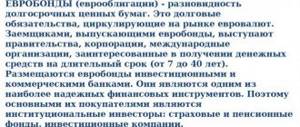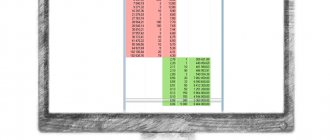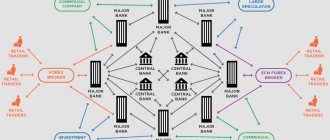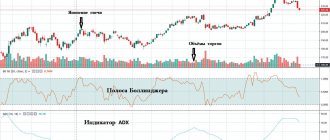Primary market participants
All participants in purchase and sale transactions are combined into three groups:
- Issuers.
- Investors.
- Financial intermediaries.
Issuers
These are those who place bonds, that is, borrow funds: federal and municipal entities, commercial organizations.
The largest issuer of coupons in our country is the state represented by the Ministry of Finance. The second largest primary sector is commercial enterprises.
Investors
These are those who buy debt securities, that is, provide borrowed funds to issuers and receive interest for it. They are:
- enterprises (institutional);
- individuals (private).
Intermediaries
Intermediaries in the primary market are banks, companies, brokers involved in organizing the purchase and sale of bonds for a commission from the issuer. It is determined by the volume of issue, the rating of coupons, etc.
The essence
Bearer bonds are easily transferable, anonymous debt instruments that offer certain advantages over other forms of currency. But it is these attributes that have made bearer bonds a popular means for criminals to circumvent the law. As a result, the future of bearer bonds remains uncertain and US-issued bonds are on the brink of extinction.
[Important: All bearer bonds issued by the U.S. Treasury have a maturity date.]
Auction or bookbuilding
The issue of debt securities occurs through bookbuilding or an auction (competition).
Bookbuilding
Bookbuilding is the compilation of a book of customer requests and, based on them, the determination of the cost of coupons. Can be over-the-counter or exchange-traded.
In over-the-counter bookbuilding, the issuer signs preliminary agreements with investors based on offers. With an exchange-based system, all received applications are activated on the exchange on the day of issue.
Auction (competition)
The issue price is set at an auction, and the first coupon rate is set at a competition. If the borrower receives many applications with the same price/rate, then those left first are given priority.
Government bonds are placed in an auction format.
What is it and why is it needed
Bearer securities are an atypical asset. From its form or content it follows that its owner is the person who owns this asset. Such a security confirms the legitimacy of the holder when presented for execution. The owner's name is not indicated on them.
Their necessity is caused by fast turnover and ease of presentation. The rights to this instrument are owned by the person who currently owns it. The transition from one holder to another is carried out by simple transfer.
Transactions on bearer securities can be carried out without spending time on legal registration of the transfer of ownership.
The circulation of this asset does not imply registration.
Primary market for private investors
It is easier for an individual to invest capital in bonds by purchasing them during secondary circulation. However, purchasing coupons at a good price on the secondary market is not easy: you need to study a large amount of data, assess liquidity, leave a request and wait a long time for a profitable offer.
Purchasing bonds at the primary level solves these problems. Here, adequate cost is guaranteed by the interaction of supply and demand.
"Non-market" issues
“Non-market” refers to the issuance of coupons when the intermediary does not have the goal of attracting investors and facilitating the formation of a market price. Bonds can hide an ordinary bank loan.
How to understand whether it is worth participating in the initial placement
To do this, you need to evaluate the “marketability” of the transaction using the following indicators:
- A large amount of information about the upcoming placement of papers is available in unlimited access.
- Availability of discussions by bond analysts.
- The time frame for compiling the order book is several hours. A shorter and more inconvenient period for acquirers indicates a “non-market” issue.
How to buy primary bonds?
Option 1.
Often banks,
investment companies or brokers themselves actively participate in initial offerings as an organizer or co-organizer of the issue , buying securities for their position. In this case, they, as a rule, actively attract their retail clients, inviting them to participate in placements on the primary market. If you decide to buy bonds on the primary market and know that your broker is involved in organizing the placement for the borrower, you should not have any problems participating in such an issue. Obviously, in this case, the broker is interested in attracting as many of his clients as possible into the transaction, since in addition to the commission for participation in organizing the issue, he will also receive a brokerage commission from his retail clients for submitting applications for participation in the primary. The only requirement that a broker can present to a private investor to participate in the primary is the minimum application size . Depending on the issuer, placement conditions, and demand for the security, the broker can set the minimum primary purchase volume for individuals, for example, at RUB 300,000. In this case buy bonds , say, for only 50,000 rubles.
Unfortunately, you won’t be able to do this through your broker. Option 2.
If the broker does not participate in the transaction as an organizer or co-organizer, then in order for the application to be included in the book, he must, on behalf of his client, send
an offer to the organizer of the placement
.
Most brokers have fixed rates for placing an offer in a book (usually about 2,000 rubles). The problem is that these costs have a significant impact on the economics of your investment, especially for small investment volumes (RUB 150,000-300,000). As a result, the price ( yield
) you receive at the exit (after paying brokerage commissions) may ultimately differ greatly from the market for the worse. In addition, not all brokers are, in principle, ready to provide their clients with free access to placements of other market participants. Don’t be surprised if the broker refuses your request to send an offer to the organizer to participate in the initial placement.
Option 3.
If it was not possible to submit an application directly to the book at the stage of its formation through a broker, then you can send the offer directly to the placement organizer, bypassing your broker, and already on the date of
technical placement of the issue on the stock exchange, through the broker, submit a targeted application in the mode of negotiated transactions. This option will not only reduce your infrastructure costs (since you won’t have to pay a broker commission for sending an offer, you will only pay a standard brokerage commission for making a transaction on the stock exchange), but will also greatly increase the chances of getting bonds in the desired volume, making profitable investments on primary market.
Source: Broker data
Option 4.
If you still didn’t succeed in participating directly in the primary placement, but you really want to get an interesting security for your portfolio, you can try to purchase it
on the secondary market , immediately after the end of the primary placement, on the same day as the bond goes on secondary trading. If you are very lucky, you can even buy it at face value , but more often you still have to overpay a little, buying paper a little higher than its face value .
TOP ↑
Transneft
The company is ready to issue its 12th bond issue. Bond Transneft AK-001R-12 will have the following characteristics:
- denomination – 1000 rubles;
- circulation period – 1092 days;
- number of payments per year – 2;
- yield - 7.9% per annum (one coupon - 39.39 rubles).
The bond will be placed on July 9, but bookbuilding is already open.
Rusal
The RUSAL Bratsk company offers the RUSAL Bratsk-001R-02 bond. This is a 10-year bond with a par value of 1000 rubles. Bookbuilding was launched on July 4, the target profitability is 8.75% per annum. Placement starts on July 11.
The coupon will be paid every 182 days, i.e. Twice a year.
An irrevocable offer is provided on January 5, 2023. The company will buy it back for 100% of the face value.
Russian Railways
Another issue preparing for placement on July 4 is bonds RZD-001P-16R with the following characteristics:
- denomination – 1000 rubles;
- circulation period – 2548 days (maturity date – July 25, 2026);
- coupon – 7.9% per annum;
- coupon payment – every 182 days.
By purchasing this bond, you will receive 39.39 rubles approximately every six months.
VTB
VTB Bank places traditional overnight bonds. But in addition to them, the annual issue of Bank VTB-B-1-31 will be posted. The denomination, as usual, is 1000 rubles. The circulation period is 364 days.
The issue is scheduled for July 5, 2021, and repayment will begin on July 3, 2021. There are only two coupon payments. The bond's yield is 7.2% per annum, each payment will be 35.9 rubles.
S-Innovations
Interesting bonds are offered by the company S-Innovations. The placement of the bond S-Innovation-BO-P01 took place on July 3, the repayment is scheduled for June 30, 2021. The bond's yield is 15% per annum. There is an offer - it is scheduled for July 6, 2021.
The coupon is variable. The size of only the next payments is determined - before the offer. Then the profitability may change. Coupon payments are made every quarter.
Retail Bel Finance
The placement of the Retail Bel Finance-01-ob bond is scheduled for July 9, and the acceptance of purchase applications will open on July 5 at 11.00 Moscow time. The rate has not yet been determined, the guideline is 11-11.5% per annum. The placement will take place at par value – 1000 rubles per bond.
The circulation period is 10 years, the period before the offer is 5 years. The coupon will be paid once every 91 days.
There are 4 amortizations provided - in 2023 and 2024 (on the payment date of 14, 16, 18 coupons). 25% of the face value will be repaid sequentially.
Zenith
The bank decided to make short-term borrowing. Bonds Zenit-001Р-04-bob were placed on July 3, the maturity date is July 5, 2020, i.e. circulation – only 366 days. During this time, only two coupon payments will be made - on January 3, investors will receive 40.13 rubles per share, and on July 3 - 39.69. The coupon size is 7.96% per annum.
The bond is currently trading at 99.75% of its nominal value of 1,000 rubles.










